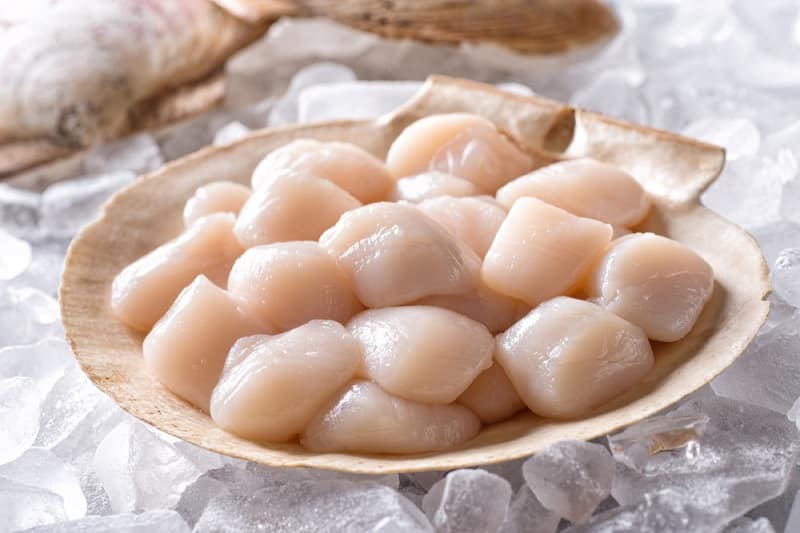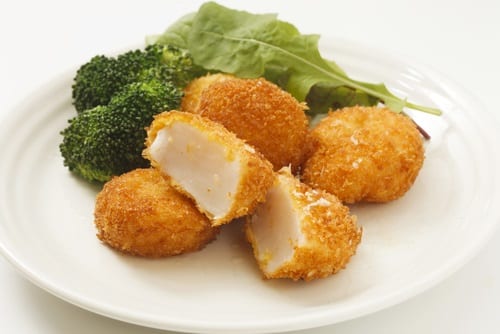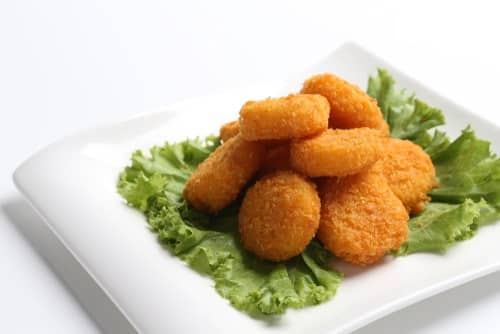
Scallops are saltwater clams or marine bivalve mollusks. Scallops have a delicate buttery, sweet flavor. Fresh scallops should not taste overly fishy but only slightly salty.
The flavor of scallops is comparable to that of crab. Scallops are a real treat, and you should not pass up the opportunity to sample them. Unfortunately, many restaurants sell imitation or fake scallops.

This article will help you differentiate real scallops and imitation scallops so that you do not end up wasting your money on imitation scallops.
This article is beneficial for people who wish to try scallops for the first time and are not familiar with the flavor and texture of scallops.
Why Do Fake Scallops Exist?
Firstly, scallops are very expensive. This is partly because scallops are difficult to source. Scallops are dredged from the ocean floor or hand-picked by divers.
Additionally, scallops are difficult to keep fresh. Added transportation costs and cooling drives the price of scallops up. Scallops are popular seafood, which often results in restaurants running out of them.
There is often demand but a lack of supply and issues in the distribution channels. To save money and always have “scallops” on the menu, many restaurants sell imitation scallops.
You may have only ever tasted imitation scallops and have not yet had the pleasure of sampling real scallops. If you have never tasted a real scallop, it can be difficult to identify imitation scallops.
Differences Between Real Scallops and Fake Scallops

One of the major ways to differentiate between real scallops and fake scallops is by looking at the shape of the scallops. Real scallops are not perfectly round and will all have a slightly different shape.
Imitation scallops, on the other hand, will all be perfectly round and in the same shape. This is because shark, stingray, or skate is often used to make imitation scallops, and they are cut out with a cookie-cutter device.
You can also tell the difference between real scallops and fake scallops by the texture. Genuine scallops have fibers that run lengthwise through them. Imitation scallops will not have these distinctive fibers.

You can also spot artificial scallops by looking at the thickness. A real scallop will have a similar thickness on all sides, whereas an artificial scallop will often be thicker on one side.
This is because fake scallops are often made from stingray or skate meat. Their wings are much thicker on the inside than on the outside, causing this difference in thickness.
Conclusion
When cooked correctly, scallops have a delicate, buttery flavor which is slightly sweet. Unfortunately, to cut costs and ensure that scallops are always on the menu, many restaurants use shark, stingray, or skate meat to make fake scallops.
These restaurants use a cookie-cutter device to cut these meats into scallop shapes. As a result, these imitation scallops will be perfectly regular in shape, unlike real scallops.
Additionally, real scallops have distinctive fibers running lengthways, whereas fake scallops do not. If a scallop is much thicker on one side, it is probably a fake scallop from stingray or skate meat. This is because stingrays and skate have wings that are tapered.